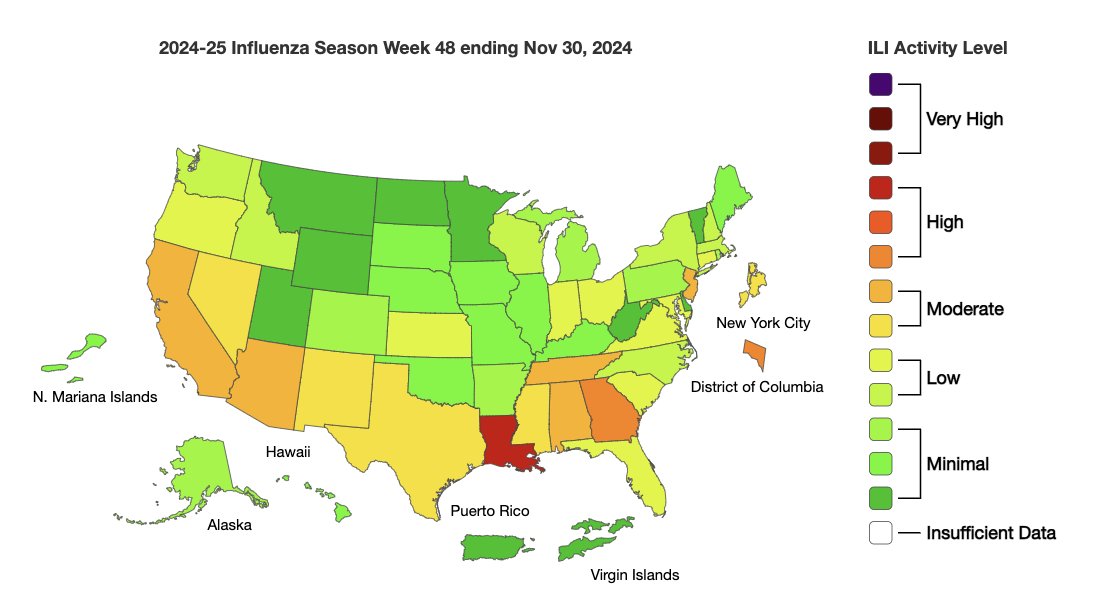1. A #flu 🧵:
Activity continued its sharp decline in the week ending Jan 21. It's barely over the epidemic threshold at this point nationally; in 6 regions it's below it. But for the fact that we've seen little #fluB activity, it would be tempting to guess flu season is over.
Activity continued its sharp decline in the week ending Jan 21. It's barely over the epidemic threshold at this point nationally; in 6 regions it's below it. But for the fact that we've seen little #fluB activity, it would be tempting to guess flu season is over.

2. But virtually all — 99.5% — of the #flu activity so far this season has been caused by flu A. There hasn't been much flu B since the first half of the 2019-20 season. In the Before Times, it was common to see flu B in late winter, early spring. This year? Ask me in June.
3. This #flu season took off like a bat outta hell in October, peaking Thanksgiving week. Activity reached a high apex, but the drop off has been swift. The image on the left shows #influenza-like illness the week ending Jan. 7. On the right, the week ending Jan. 21. 



4. Six more kids have died this season from #flu, bringing the season total to 91. That number is still lowish vis-a-via the Before Times, but getting into the low end of the range of a normal season. @CDCgov started tracking flu peds deaths after a bad year in 2003-04.... 

5. The first few years probably reflect a system getting started i.e. artificially low. 2009 was the H1N1 pandemic — lots of pediatric deaths. 2011-12 was a very mild season. Most years pre-Covid pediatric #flu deaths ranged between 100 & 200. 

6. #Flu activity in long-term care facilities has really declined. Always a welcome development.
The whole Fluview report is here: cdc.gov/flu/weekly/
The whole Fluview report is here: cdc.gov/flu/weekly/

7. We still don't know how well the #flu vaccine worked this year. The strains it targets are well matched to circulating strains but that doesn't necessarily equate to terrific protection, especially with H3 viruses. @CDCgov says it will have effectiveness data in February.
• • •
Missing some Tweet in this thread? You can try to
force a refresh



















